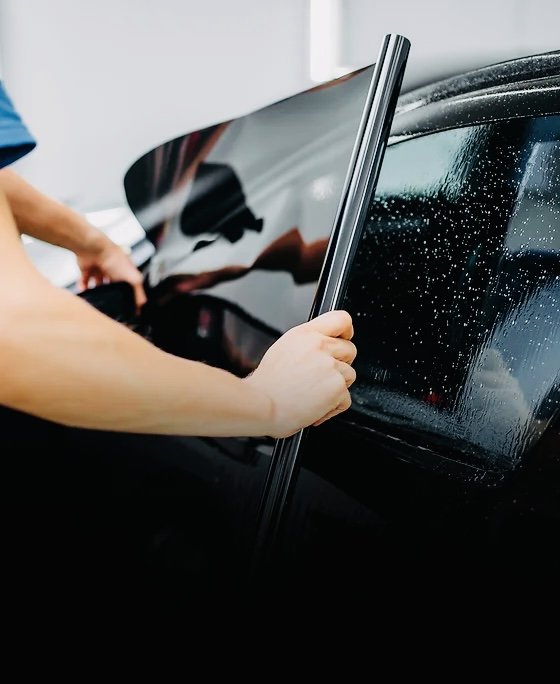Your Comprehensive Overview to DIY Home Window Tinting: Tips and Techniques
Embarking on a DIY home window tinting job offers an opportunity to boost both the performance and appearances of your area. Prior to getting started on this venture, it is crucial to browse the complexities of neighborhood tinting regulations and select an ideal film that aligns with your objectives.
Comprehending Home Window Tinting Laws
Browsing the elaborate landscape of window tinting legislations is essential for any type of DIY enthusiast looking for to enhance their vehicle's looks and convenience. Each state in the U.S. has certain guidelines regarding the permitted levels of color on different windows, which can substantially influence your decision-making procedure.
Generally, these regulations determine the maximum allowed Visible Light Transmission (VLT) percentage, which describes the quantity of light that can go through the tinted windows. For instance, some states permit only a specific percentage of tint on the front windshield, while enabling darker tones on back windows. Compliance with these laws is essential, as failure to adhere can result in fines or the demand to remove the tint completely.
In addition, there are commonly distinctions in between traveler cars and commercial lorries, with different guidelines putting on each classification. It's recommended to consult your neighborhood Division of Motor Autos or equal authority to collect precise details customized to your area. Understanding these regulations not just guarantees legal conformity but additionally enhances security by keeping exposure and protecting against possible dangers while driving.

Selecting the Right Color Film
Picking the proper tint movie is an essential action in the DIY window tinting procedure, as it directly affects both the appearance and functionality of your lorry's home windows. Several elements should lead your option, consisting of the kind of film, its lawful compliance, and your wanted results.
First, think about the various types of color films readily available: dyed, metalized, ceramic, and crossbreed. Metalized films supply enhanced heat rejection and resilience however can interfere with electronic signals.
Following, make certain that the movie adheres to local guidelines worrying visible light transmission (VLT) portions. Conformity with these regulations is crucial to avoid penalties and make certain safety.
Crucial Tools for DIY Tinting
Having selected the appropriate tint film for your windows, the following action involves gathering the needed tools to guarantee an effective installation. The key tools you will certainly require consist of an energy knife or a razor blade, which is necessary for reducing the color film to the preferred size. A squeegee is additionally crucial, as it aids remove air bubbles and ravel the movie throughout application.
Along with these primary tools, a spray container loaded with soapy water will certainly aid in developing a workable surface area for the color movie, permitting for changes prior to it adheres permanently. A gauging tape ensures precise measurements for reducing the movie properly, while a soft cloth or lint-free towel is navigate to these guys necessary for cleansing the glass surface area prior to application.
In addition, think official statement about utilizing a warm weapon or hairdryer, as this can aid mold and mildew the color film to the contours of the window and assist in adherence. Lastly, handwear covers are a good idea to prevent fingerprints on the film during installation. By collecting these important tools, you will certainly be well-prepared to tackle your DIY window tinting job successfully.
Step-by-Step Application Process
Begin by thoroughly cleaning the home window surface to make certain optimal attachment of the tint movie. As soon as the home window is clean, gauge the tint film versus the home window, enabling for a slight overlap on all sides.
Lightly spray the home window surface area and the adhesive side of the film. Very carefully align the film with the top of the home window, guaranteeing it is directly. Window Tinting Folsom. Use a squeegee to smooth the movie, using company, even stress.
Trim any kind of excess film from the sides with your utility knife. Ultimately, allow the tint to treat for at the very least 1 day without rolling down the home windows. This step is essential for making certain a lasting application. Comply with these steps carefully for optimum cause your do it yourself home window tinting project.
Maintenance and Care Tips
Correct upkeep and treatment of your home window color is important to guarantee its long life and effectiveness. To start with, avoid using rough cleaners or rough materials when cleansing colored windows. Instead, choose a mild, ammonia-free cleaner and a soft microfiber fabric to stop scrapes and peeling off.
It's advisable to wait a minimum of a week after installment prior to cleaning your home windows to permit the sticky to completely cure. During this preliminary period, stay clear of rolling down the home windows to avoid any kind of damages to the tint.
Normal upkeep involves inspecting the sides of the color for any type of signs of gurgling or lifting (Window Tinting Folsom). If you notice any kind of problems, Related Site it's finest to address them quickly to stay clear of additional damage. Furthermore, be cautious with making use of window therapies, such as shades or drapes, as they can generate warmth that may compromise the color with time

Conclusion
In conclusion, embarking on a DIY window tinting project demands cautious consideration of regional regulations, option of suitable tint films, and the use of necessary tools. A systematic application procedure guarantees optimal results, while normal maintenance adds to the durability of the color. By adhering to these standards, people can accomplish both aesthetic improvement and increased personal privacy in their rooms, making DIY home window tinting a valuable undertaking.